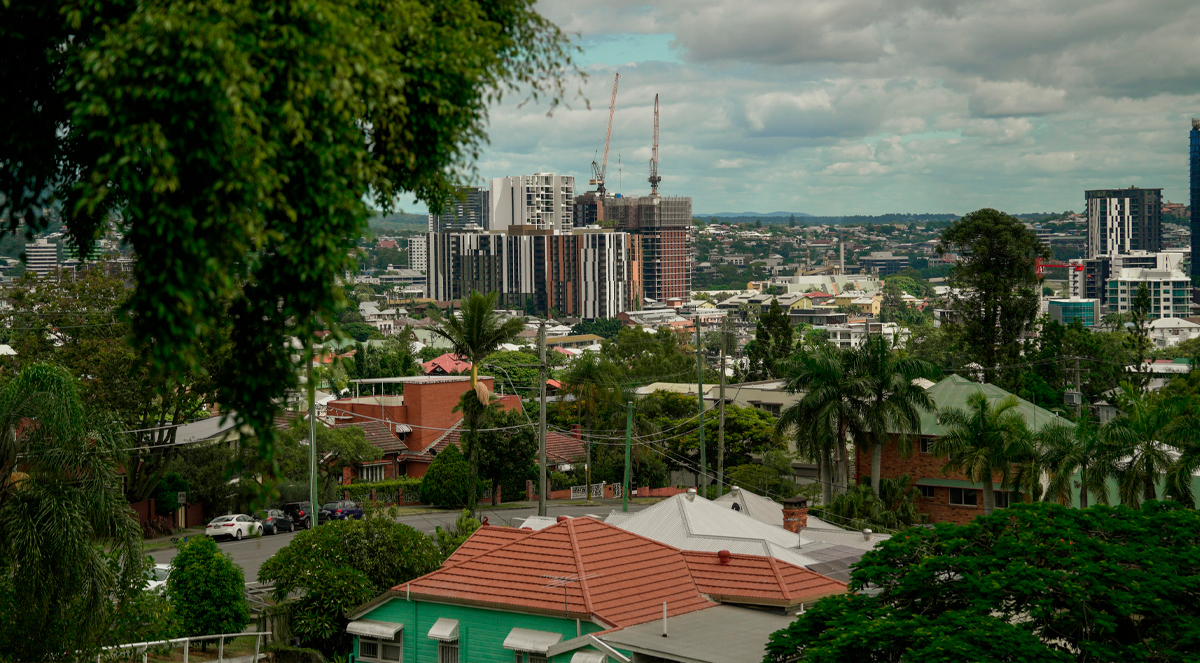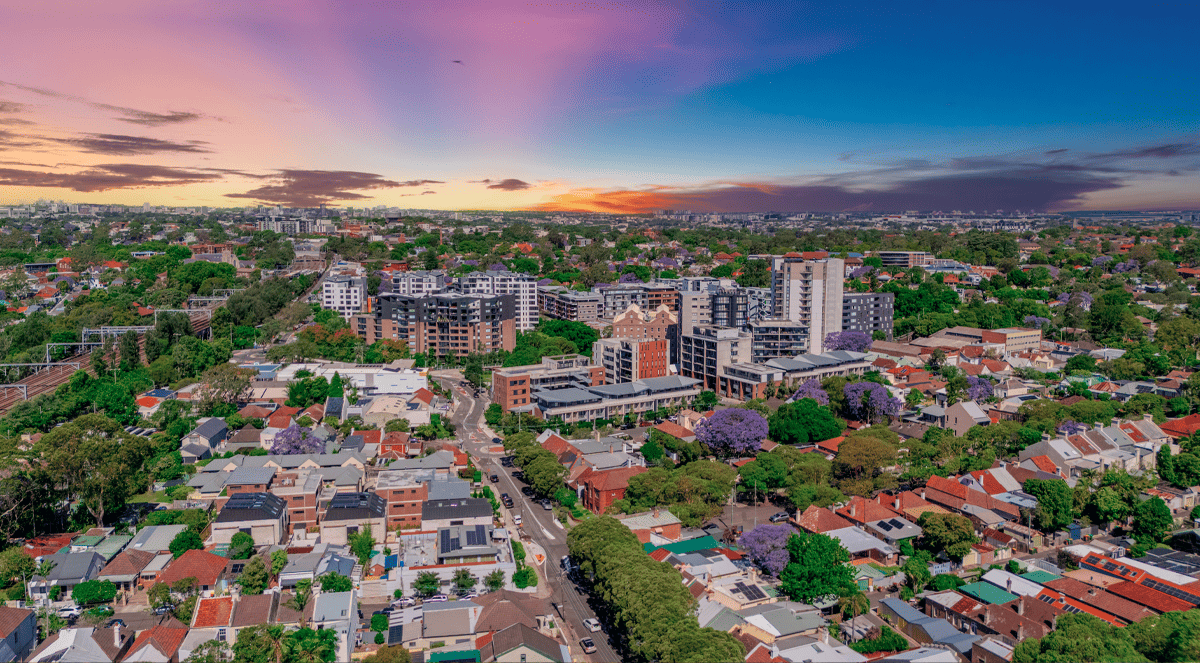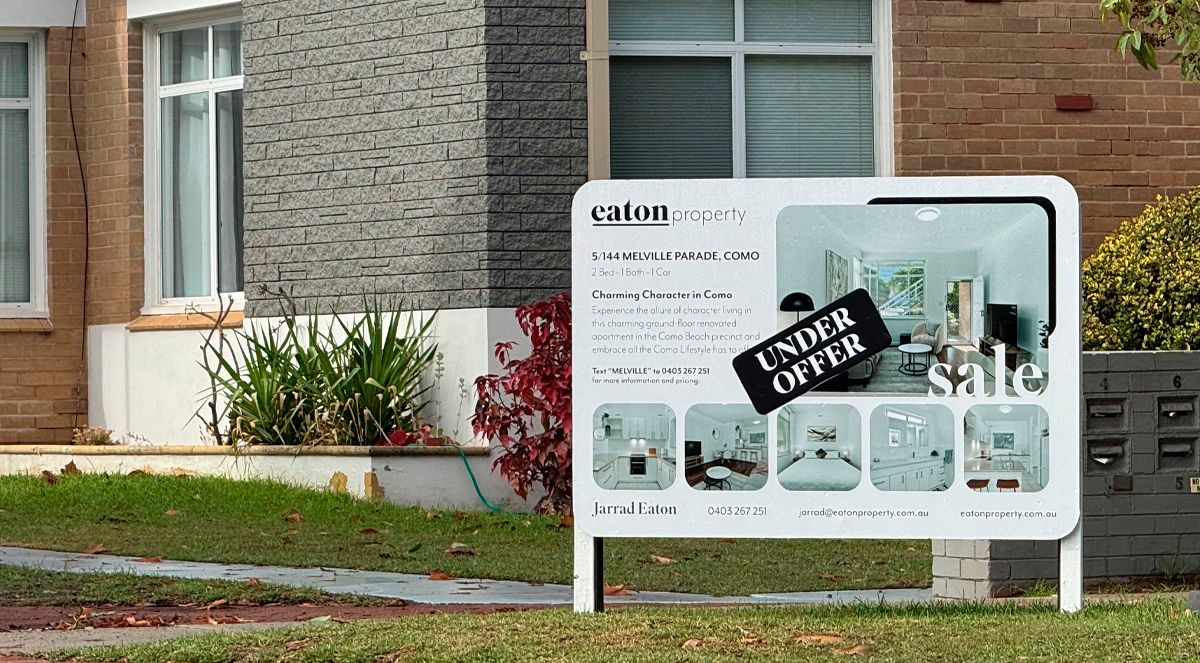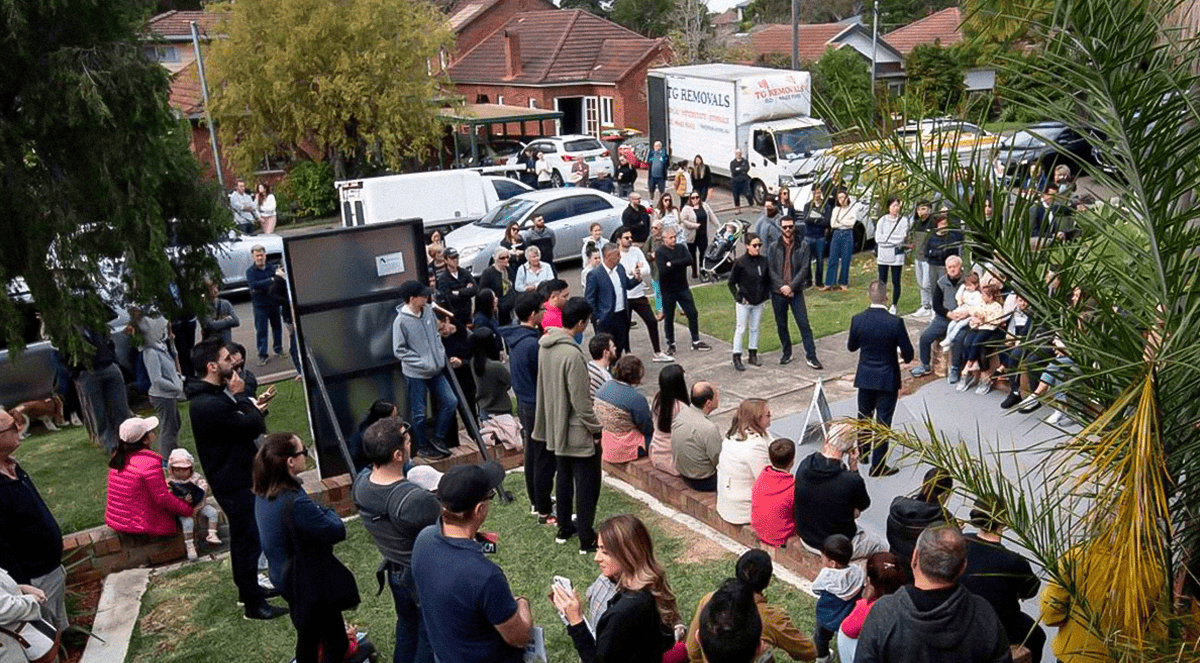.png)
Image by Stephen Kiprillis, Dion Georgopoulos/Bloomberg
KEY POINTS
- Tax cuts, cost-of-living relief, and lower interest rates are expected to boost disposable income by 9% by 2026-27, driving up home loans and housing prices
- The Federal budget includes an $800 million expansion of the “Help to Buy” scheme, raising income and property price caps to assist more first-home buyers
- To address supply constraints, the government is investing in modern construction methods and enforcing a two-year ban on foreign home purchases
The Albanese government’s fourth budget looks set to boost the housing market, with tax cuts and cost-of-living relief set to put more money in the pockets of everyday Australians.
The budget also broadens a number of existing housing affordability initiatives, aimed at boosting supply.
However, the biggest impact on housing looks set to come from the big increase Treasury is forecasting in the disposable income of Australian households - an increase which will enable first-home buyers, owner-occupiers and investors to all qualify for larger home loans.
That’s a scenario which will inevitably drive up prices in an already undersupplied housing market, not ease affordability.
Tax cuts
With an eye firmly on the looming election, Treasurer Jim Chalmers has unveiled a surprise “top-up” tax cut for all Australian workers.
From the 1st of July next year, the 16% tax rate, which applies to taxable income between $18,201 and $45,000, will be reduced to 15%.
Then on the 1st of July 2027, this tax rate will be reduced further to 14%.
The cuts will mean a worker on average earnings will get a new tax cut of $268 in 2026–27 and $536 per year from 2027–28.
"These additional tax cuts are modest but will make a difference," Dr Chalmers told parliament.
The government says the measure, which will cost $17.1 billion over five years, will also “top-up” the reworked Stage 3 tax cuts that have been rolling out since July last year.
The relatively slow implementation of these new tax cuts will “help ensure fiscal settings remain consistent with inflation sustainably remaining in the Reserve Bank of Australia’s target band,” according to the government.
The Federal Opposition has derided the tax cuts as a “cruel hoax”, saying the Albanese government’s plan amounts to the equivalent of just 73 cents a day extra (in 2026) for the average wage earner.
At face value, that’s right.
However, a detailed look at the budget papers shows that when combined with the earlier large Stage 3 cuts, other cost-of-living measures, lower inflation and interest rates, these tax cuts end up packing quite a punch.
“Lower inflation, continued employment growth, higher wages, tax cuts, and the recent reduction in interest rates (by the Reserve Bank of Australia) will support a pick-up in real household disposable income,” the budget papers state.
“Real household disposable income in 2026–27 is forecast to be around 8.75% higher compared to 2023–24.”
In other words, from mid-next year, Australian households on average should have nearly 9% more disposable income than they did in the first half of last year.
That is a huge turnaround in a little over two years.
This extra disposable income should flow through to increased borrowing capacity for households, enabling first home-buyers, existing owner-occupiers and investors to qualify for larger home loans.
That’s a scenario which looks set to drive up real estate prices in an already undersupplied market, not make them more affordable.
Help to Buy
The highest profile direct housing affordability initiative in the budget is an $800 million expansion of the existing Help to Buy shared equity scheme, increasing income and home price caps.
The program lets first-home buyers buy a home, with the government taking an equity stake of between 30% and 40% of the cost.
As home buyers build up their own equity in the property over time, they can then leverage that to effectively “buy out" the share owned by the Commonwealth.
The idea is to make it possible for lower-income Australians who would have trouble raising a standard deposit and qualify for a home loan to own their own dwelling sooner.
The budget allows the scheme’s income caps for participants to be raised from $90,000 to $100,000 for individuals, and from $120,000 to $160,000 for joint applicants and single parents.
Price caps on eligible properties will also be increased.
“The changes mean that (eligible buyers) can access a bigger range of homes and buy one that suits them,” Treasurer Jim Chalmers told parliament.
However, Help to Buy - which still hasn’t officially opened to buyers - remains a fairly small program, only set to help around 10,000 people a year nationwide over the four-year life of the scheme.
“The scheme will be well received by first-home buyers that fall within the income ranges and want to buy under the price cap,” according to Ray White’s Chief Economist, Nerida Conisbee.
“Overall however, global evidence from similar schemes has shown limited success in improving housing affordability, or increasing supply,” she said.
New home construction methods
In a bid to speed up delivery of the government’s target of building 1.2 million homes by mid-2029, the budget allocates funds for more “efficient construction methods”, including prefabricated and modular building.
“This includes $54 million to accelerate the uptake of modern methods of housing construction, which is all about building more homes more quickly,” Dr Chalmers said.
Ban on foreigners buying homes
The budget also provides nearly $15 million in funding to the Australian Tax Office for enforcement of a previously announced two-year ban on foreign investors buying established homes in Australia.
The ban kicks in from the 1st of April this year.
“We're raising pressure on the housing market by banning foreign investors from buying established homes and cracking down on foreign land banking as well,” Dr Chalmers said.
Overseas investors who own land earmarked for large projects will have to meet stricter timelines to begin building residential or commercial developments or face punishment.
However, the Property Council of Australia questioned why the Federal government was again seeking to repel overseas investors.
“As Australia has grown, overseas investment has always helped grow our cities for the better,” the Council’s Chief Executive Mike Zorbas said.
“Industrial hubs, commercial buildings and new housing communities, which Australians need to create opportunities and to support their daily lives, will need increasing institutional investment from overseas.”
Stay Up to Date
with the Latest Australian Property News, Insights & Education.




.png?width=292&height=292&name=Copy%20Link%20(1).png)
 SIGN UP FOR FREE NEWSLETTER
SIGN UP FOR FREE NEWSLETTER





.jpg?width=1920&height=1080&name=Warning%2c%20You%20Might%20Be%20Facing%20Higher%20Taxes%20Soon%20(1).jpg)





.png?width=1920&height=1080&name=Rate%20Drops%20Signal%20BIGGEST%20Property%20Boom%20in%20DECADES%20(1).png)

.jpg?width=1920&height=1080&name=Labor%20vs%20Liberal%20These%20Housing%20Policies%20Could%20Change%20the%20Property%20Market%20Forever%20(1).jpg)
.jpg?width=1920&height=1080&name=QLD%20Slashes%20Stamp%20Duty%20Big%20News%20for%20Investors%20%26%20Home%20Buyers%20(1).jpg)
.jpg?width=1920&height=1080&name=Trump%20Just%20Slapped%20Tariffs%20%E2%80%93%20Here%E2%80%99s%20What%20It%20Means%20for%20Australia%20(1).jpg)
.jpg?width=1920&height=1080&name=Federal%20Budget%202025%20More%20Debt%2c%20No%20Housing%20%E2%80%93%20Here%E2%80%99s%20What%20You%20Need%20to%20Know%20(1).jpg)
.jpg?width=1920&height=1080&name=Australias%20Housing%20Crisis%20is%20about%20to%20get%20MUCH%20Worse%20(New%20Data%20Warns).jpg)
%20(1).jpg?width=1920&height=1080&name=Australias%20RENTAL%20CRISIS%20Hits%20ROCK%20BOTTOM!%20(2025%20Update)%20(1).jpg)
%20(1).png?width=1920&height=1080&name=Is%20Adelaide%20Still%20a%20Good%20Property%20Investment%20(2025%20UPDATE)%20(1).png)
.jpg?width=1920&height=1080&name=RBA%20Shocks%20with%20Rate%20Cuts!%20What%E2%80%99s%20Next%20for%20Property%20Investors%20(1).jpg)
%20(1).jpg?width=1920&height=1080&name=I%20Predict%20The%20Feb%20Rate%20Cut%20(My%20Price%20Growth%20Prediction)%20(1).jpg)
.png?width=1920&height=1080&name=Why%20Property%20Prices%20Will%20Rise%20in%202025%20Market%20Predictions%20(1).png)
.jpg?width=1920&height=1080&name=Why%20Investors%20Are%20Choosing%20Apartments%20Over%20Houses%202%20(1).jpg)
.jpg?width=1920&height=1080&name=Why%20Rate%20Cuts%20Will%20Trigger%20A%20Property%20Boom%20(1).jpg)
.jpg?width=1920&height=1080&name=Retire%20On%202Million%20With%20One%20Property%20(Using%20SMSF).jpg)
.jpg?width=1920&height=1080&name=4%20Reasons%20Why%20You%20Should%20Invest%20in%20Melbourne%20Now%20(1).jpg)
%20(1).jpg?width=1920&height=1080&name=Old%20Property%20vs%20New%20Property%20(Facts%20and%20Figures%20Revealed)%20(1).jpg)
%20(1).jpg?width=1920&height=1080&name=Will%20The%20New%20QLD%20Govt%20Create%20a%20Property%20Boom%20or%20Bust%20(My%20Prediction)%20(1).jpg)
%20Scott%20Kuru%20(1).jpg?width=1920&height=1080&name=Inflation%20Hits%20Three-Year%20Low%20(Will%20RBA%20Cut%20Rates%20Soon)%20Scott%20Kuru%20(1).jpg)
.jpg?width=1920&height=1080&name=How%20to%20Buy%20Investment%20Property%20Through%20SMSF_%20The%20Ultimate%20Guide%20(1).jpg)
.jpg?width=1920&height=1080&name=Victoria%20Slashes%20Stamp%20Duty%20Melbourne%20Set%20to%20Boom%20Scott%20Kuru%20(1).jpg)
.png?width=1571&height=861&name=Are%20Foreign%20Buyers%20Really%20Driving%20Up%20Australian%20Property%20Prices%20(1).png)
.jpg?width=1920&height=1080&name=The%20Single%20Factor%20That%20Predicts%20Property%20Growth%20Regions%20(1).jpg)
%20Scott%20Kuru%20(1).jpg?width=1920&height=1080&name=My%20Prediction%20On%20Rates%20%26%20Negative%20Gearing%20(Market%20Crash)%20Scott%20Kuru%20(1).jpg)

-1.png?width=1920&height=1080&name=Major%20Banks%20Cut%20Rates%20Will%20RBA%20Follow%20Suit%20(Sept%20Rate%20Update)-1.png)
%20Scott%20Kuru-1.png?width=1920&height=1080&name=Rate%20Cut%20Coming%20What%20New%20Zealands%20Move%20Means%20for%20Australia%20(Sept%20Prediction)%20Scott%20Kuru-1.png)
%20(1).jpg?width=1920&height=1080&name=Buy%20when%20the%20interest%20rates%20are%20high!%20(Why%20you%20must%20buy%20now!)%20(1).jpg)
.jpg?width=1920&height=1080&name=Carms_Revised%20Taxes%20Due%20Aug%209%20YT%20Thumbnail02%20(1).jpg)
.jpg?width=1920&height=1080&name=Carms_Too%20Little%20Too%20Late%20Aug%207%20YT%20Thumbnail01%20(1).jpg)









.jpg?width=1920&height=1080&name=Carms_Rate%20Drop%20In%20July%20Jun%2010%20YT%20Thumbnail02%20(1).jpg)
.jpg?width=1920&height=1080&name=Carms_Own%20a%20Property%20V6%20Jun%205_YT%20Thumbnail%20(1).jpg)









.png?width=1920&height=1080&name=Artboard%201%20(3).png)






.jpg?width=1920&height=1080&name=YT%20thumbnail%20%20(1).jpg)

